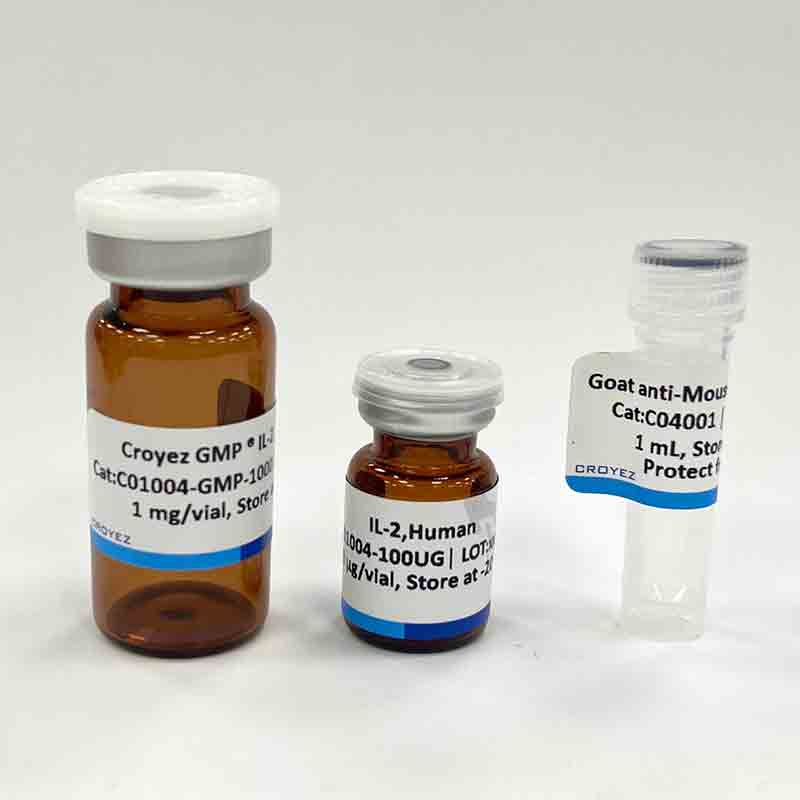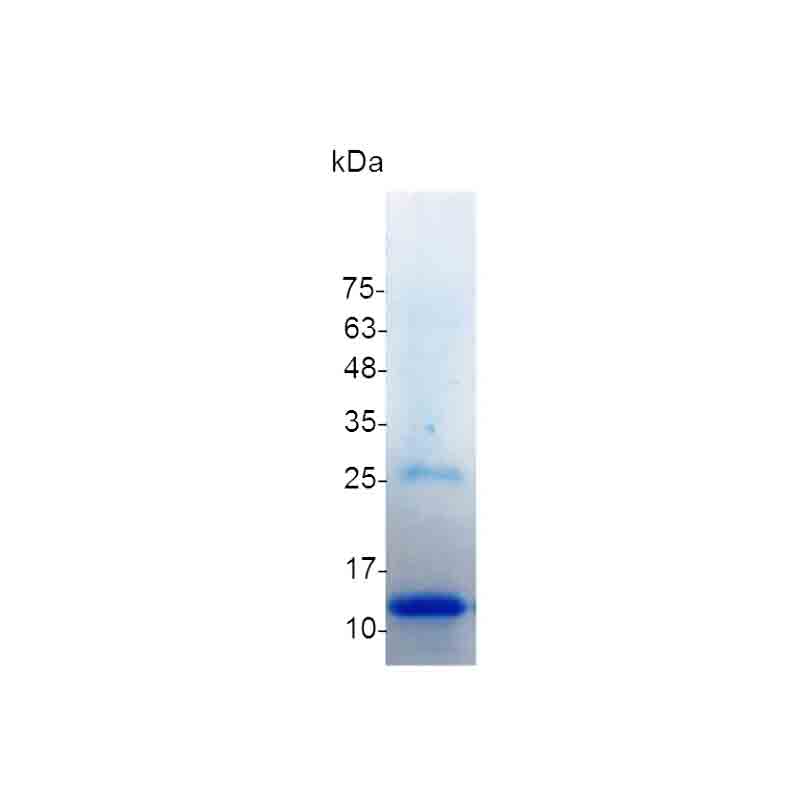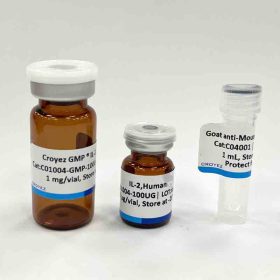Transforming growth factor-beta 3 (TGF-β3), also named TGFB3, is a member of the TGF beta family of growth factors together with TGF-β1 and -2. TGFB3 is produced as a complex with LAP. This latent form of TGFB3 can be stimulated upon cleavage by plasmin, matrix metalloproteases, thrombospondin -1, and a subset of integrins. It binds with high affinity to TGF- β RII, a type II serine/threonine kinase receptor. TGFB3 take part in the process such as cell differentiation, embryogenesis and development. In addition, it is found to regulate molecular elements involved in cellular adhesion and extracellular matrix (ECM) formation during the process of palate development.
Sequence:
MALDTNYCFRNLEENCCVRPLYIDFRQDLGWKWVHEPKGYYANFCSGPCPYLRSADTTHSTVLGLYNTLNPEASASPCCVPQDLEPLTILYY
VGRTPKVEQLSNMVVKSCKCS with polyhistidine tag at the C-terminus
Source:
Escherichia coli
Endotoxin Test:
<0.1 EU per 1 μg of the protein by the LAL method.
Activity:
Measure by its ability to inhibit IL-4-induce proliferation in HT-2 cells. The ED50 for this effect is <50 pg/mL. The specific activity of recombinant human TGF beta 3 is > 2 x 107 IU/mg.
Purity:
>98% as determined by SDS-PAGE analysis. Purified by Ni-NTA chromatography
Formulation:
The protein was lyophilized from a solution containing 0.2 M NaCl, 20 mM sodium citrate, pH 3.5.
Reconstitution:
It is recommended to reconstitute the lyophilized protein in sterile H2O to a concentration not less than 100 μg/mL and incubate the stock solution for at least 20 min to ensure sufficient re-dissolved. In some experiments, it recommends to add 10 mM HCl when reconstitute lyophilized protein.
Storage:
Lyophilized protein should be stored at -20°C. Upon reconstitution, protein aliquots should be stored at -20°C or -80°C.
Note:
Please use within one month after protein reconstitution.





